The Catskill Mountains has bobcats most mountain ranges. Most bobcats are generally found on the lower elevations of the mountain ranges. While there are quite a few bobcats in the Catskill Mountains, very few people ever see them. They are elusive and sneaky. But, you can easily find their tracks in the snow in the winter.
Bobcats have prints that are between 1 and 3 inches in diameter. The average is around 1.75 inches. The prints will have 4 roundish paw prints in front with a "M" shaped paw print in back of the 4 front paw prints. Bobcats are like domestic cats. They need to use their muscles to extend their claws. So, most prints will not show claws.
Bobcats range in weight of 15 pounds to 35 pounds with 25 pounds being the average. There have been reports of bobcats weighing up near 50 pounds, but this is the except rather then the rule. They range in height of 18-to-24 inches, with an average of 22 inches. They range from 24-to-48 inches long. Bobcats come in a number of morphs. One morph is tan with spots. A second morph is red. A third morph is almost completely tan. A forth morph is more black in color. The most common morph is tan with spots. Bobcats do not pose a danger to humans, but they are usually not scared of them either. Bobcats will rarely attack a human. If a person is attacked, it is because they are rabid.
Bobcats are carnivores and eat small rodents (like mice and voles), squirrels, chipmunks, birds, chickens, pets (small dogs or cats), rabbits, and deer fawns. But, larger bobcats have been known to take mature deer does. Usually while the deer is lying down and unaware. Their favorite prey is the Eastern Cottontail Rabbit (pictured). Bobcats will quickly adapt as prey populations change. This has allowed them to survive where Lynx relied on rabbits only. Bobcats will stalk their prey and move in rapidly once the prey comes within about 20 feet. Bobcats can leap up to 12 feet high.
Bobcats like areas that have rock ledges and small caves. They also like swampy areas. They can travel up to 50 miles a day, but have a territory range of of a couple square miles. They will pick a territory that has enough prey to feed them.
Bobcats mate between February-and-March. The have 2-4 kittens in the April-to-May time frame. Sometimes they will have a second brood in September. They are born blind, and will get their vision around the 10th day of life. Between the 3rd-and-5th month they will start to travel with their mother. They will stay with their mother from 7-to-12 month. They will live from 6-to-8 years in the wild. The oldest bobcat in the wild is 16 years, and 32 years in captivity.
Bobcats can be seen any time of day or night, but are most active around dusk and dawn. Bobcats are crepuscular (Most active at twilight and dawn). They are active three hours before sunset and until midnight. At dawn they are active until three hours after sunrise. At night they will move from 2 to 7 miles on the average, but can travel up to 50 miles per day. Bobcats are habitual, and will travel the same routes at the same time each day. Bobcats become more diurnal (like humans) during fall and winter. In the winter when prey is not as abundant, they will spend more time hunting during the day.
The only predators are humans, mountain lions and gray wolves. Great-Horned Owls, hawks, coyotes, and foxes will prey on kittens. Diseases, accidents, hunters, car impacts, and starvation are the other leading causes of death for Bobcats. Survival rates of 1st year bobcats is around 62%. Many die after dispersing from their mother. Bobcats also have a problem with deep snow, and this can lead to starvation.
Historically, bobcats were very abundant in the 1600's and 1700's. They are believed to be how Catskill, New York got it's name. Bobcats were seen on the creeks near Catskill, NY. They were virtually hunted to extinction during the 1800's. It took all of the 1900's for them to rebound. Today, we have a moderate population of bobcats. I
|
 |
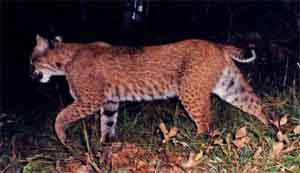 |
 |
Bobcat |
 |
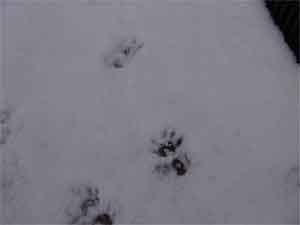 |
 |
Bobcat Prints in the Snow |
 |
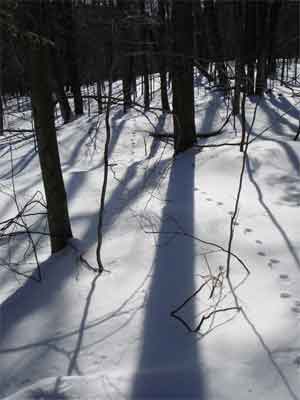 |
 |
Bobcat Prints in the Snow |
 |
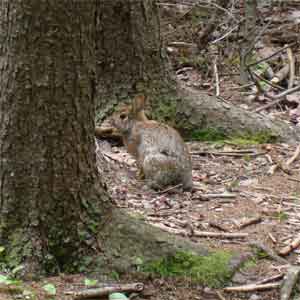 |
 |
Rabbit - Prey of Bobcats |
 |
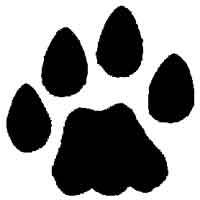 |
 |
Bobcat Paw Print |
|

